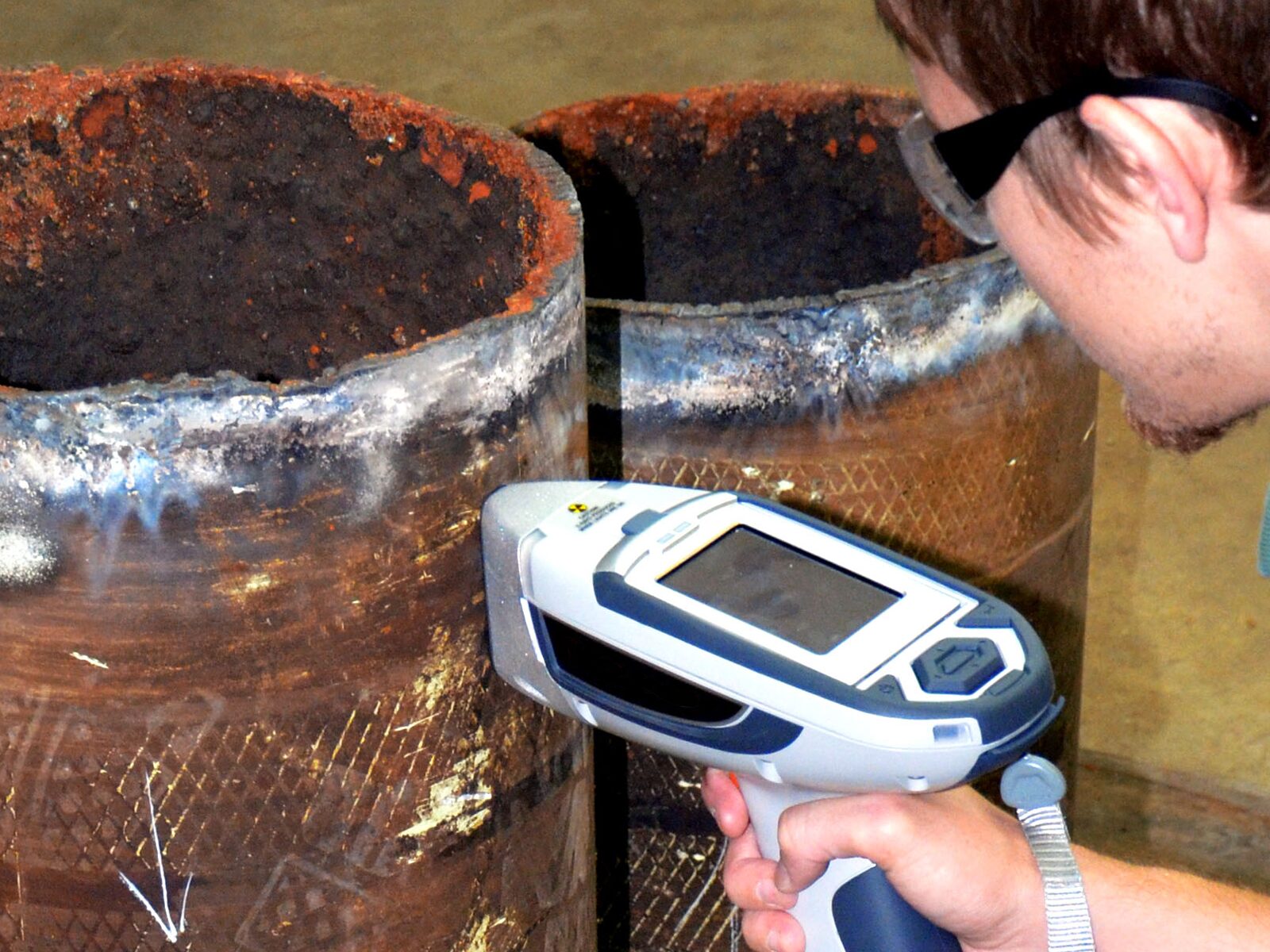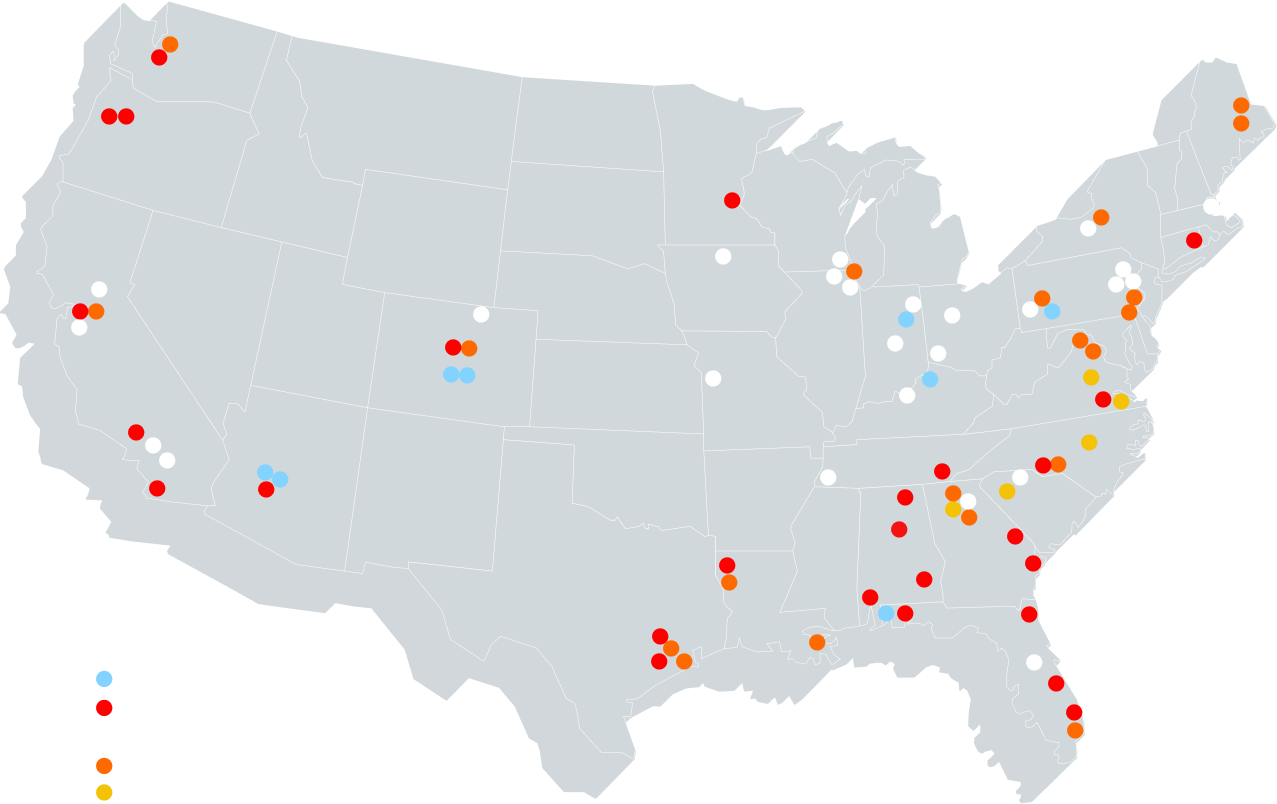A complementary technique to our full chemical analysis capabilities, Energy Dispersive Spectroscopy (EDS) enables Applied Technical Services’ metallurgists to identify and analyze small contaminant particles, metal chips, corrosion products, and platings.
This powerful tool, also called energy dispersive x-ray, EDX, and EDAX, uses the focused scanning electron beam in the electron microscope to excite the atoms of an unknown material, and identifies the elements present by discriminating the characteristic x-rays emitted by the sample, similar to a fingerprint.
Mapping of the elemental concentrations across samples is possible, which often aids in the formation of opinion in failure analyses, or provides semi-quantitative data for research studies. When present in high concentrations, corrosive ions such as chlorine or sulfur can be detected.
The technique is performed per guidelines provided in ASTM E1508 procedure.
X-Ray Diffraction (XRD)
Further enhanced material identification is made possible by our x-ray diffractometer. XRD is able to identify the crystal structure (the physical arrangement of the element atoms) of a material. In this way, the actual compounds present can be identified, as opposed to just the elements identified by EDS (i.e. iron as a metal vs. iron as an oxide)
The XRD technique is extremely useful in corrosion failure analysis, verification of metallurgical phases, reverse engineering of coatings, and contaminant identification.
The diffractometer is capable of analyzing standard powder samples with approximate packed volumes the size of a dime, metallurgical mounts, and certain coatings depending on the geometry of the substrates. The computer driven material search utilizes the ICDD diffraction pattern database used by most universities, giving access to hundreds of thousands of reference patterns. ATS follows ASTM D934 guidelines in performing XRD analysis.



